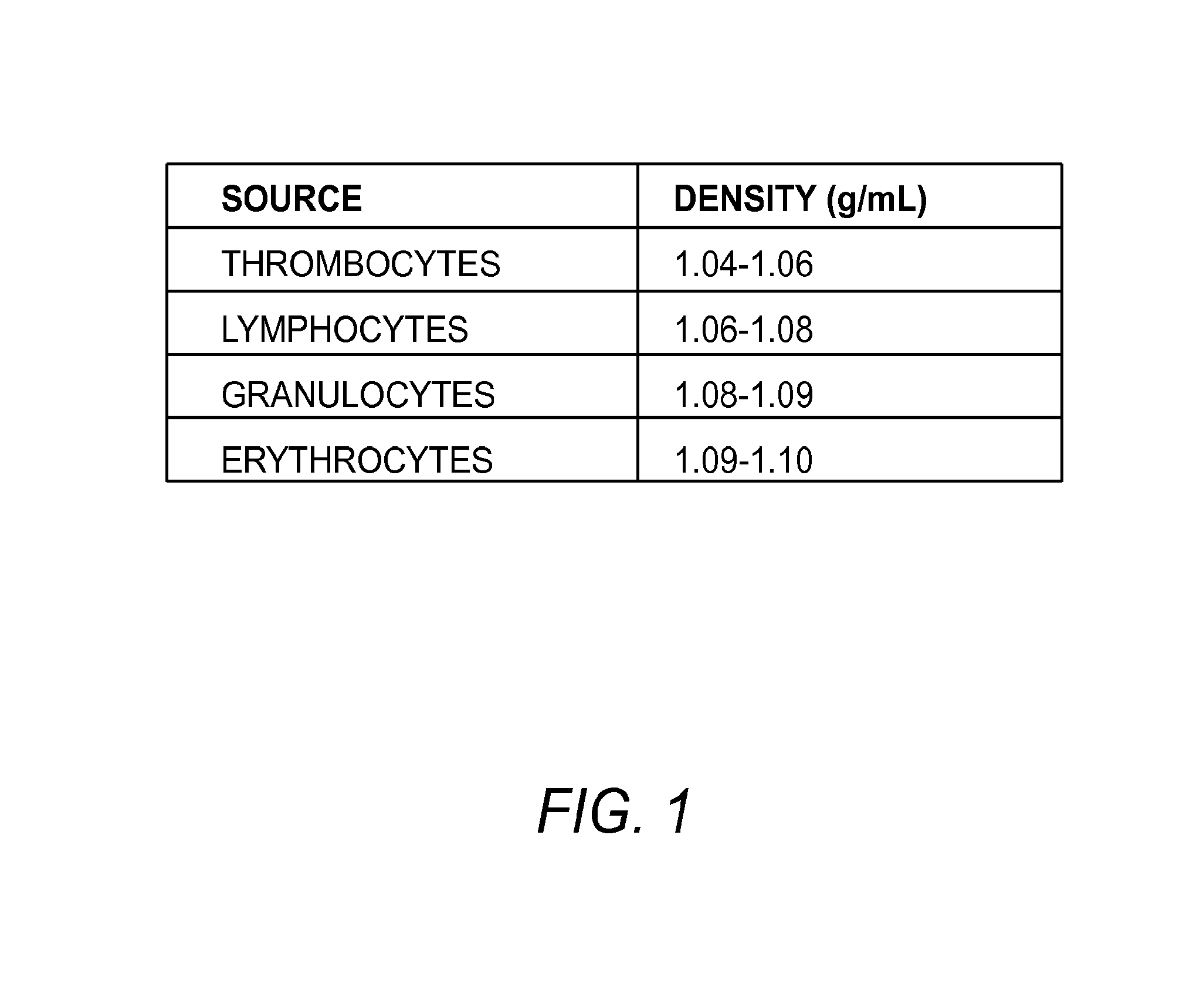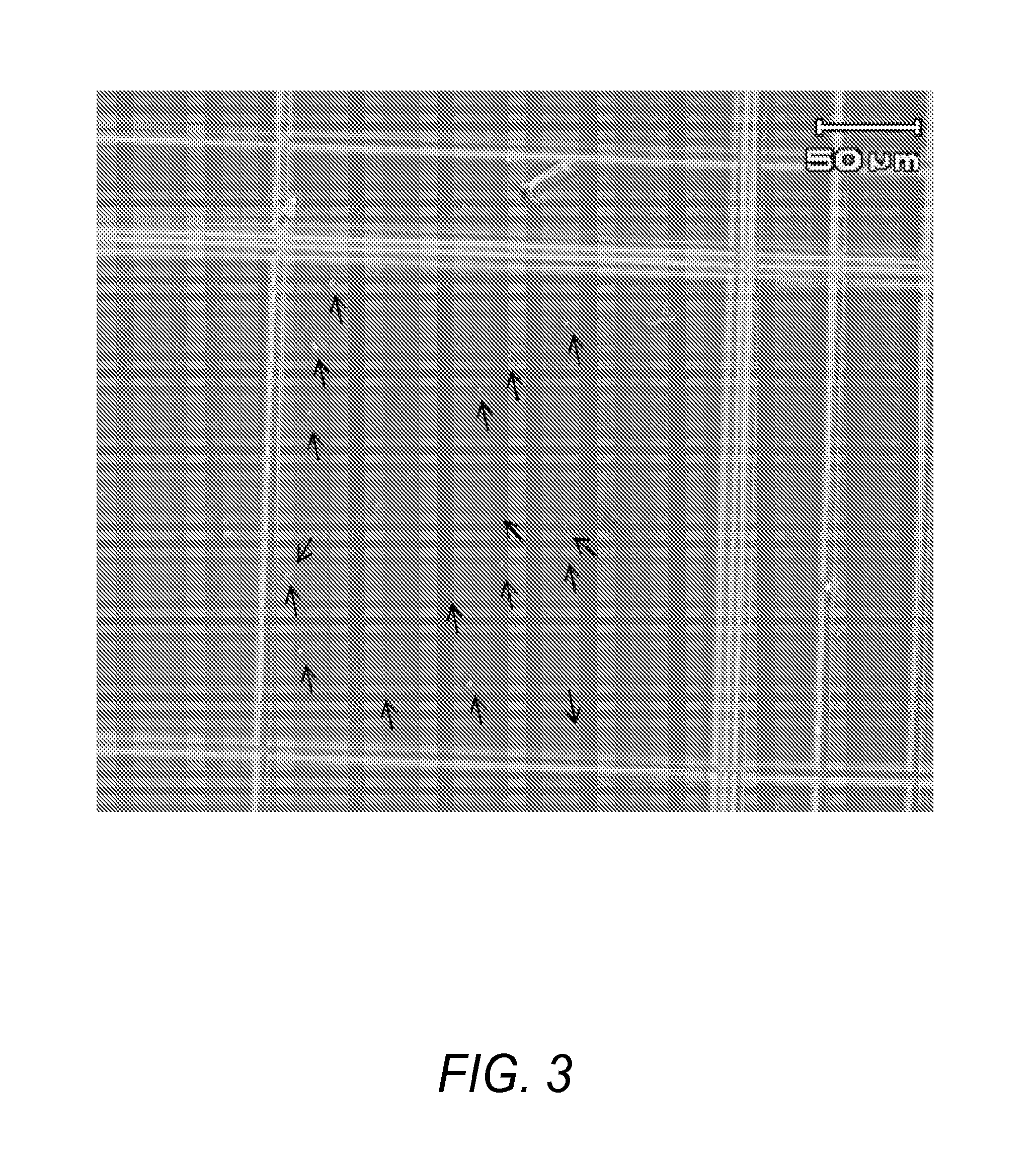Isolation, expansion and use of autologous pluripotent stem cells
a technology autologous expansion, applied in the field of autologous pluripotent stem cells, can solve the problems of inability to faithfully recapture disease processes, methods using expensive technologies, and relatively expensive and time-consuming generation of ips cells, and achieves low risk of cancer, high nuclear to cytoplasm ratio, and small size
- Summary
- Abstract
- Description
- Claims
- Application Information
AI Technical Summary
Benefits of technology
Problems solved by technology
Method used
Image
Examples
example 1
Isolation of Stem Cells
[0187]In the example describe herein, 10 mL of peripheral blood was collected by routine venipuncture into sodium citrate (green top) tubes. If more blood is collected the processing steps are scaled up accordingly. The blood was kept at 37° C. in a water bath for less than 2 hours.
[0188]Contaminating red blood cells were removed by lysis by mixing 2.5 mL of whole blood with 47.5 mL of 37° C. hypotonic lysis buffer (BD Pharm, containing ammonium chloride, potassium carbonate, and EDTA) in a 50 mL centrifuge tube. Any other red blood cell lysis buffer may also be used. The tubes were gently vortexed for about 15 seconds, and then incubated in a 37° C. water bath protected from light for 15 minutes.
[0189]Alternatively, other body fluids and tissues can be obtained and processed as appropriate to that tissue using methods known to others familiar with the art.
[0190]The tubes were centrifuged at 1000 g for 30 minutes. The supernatant was decanted, and the pellet r...
example 2
Alternate Protocol for Isolating aPS Cells
[0203]As an alternative embodiment to isolate aPS cells from animal body fluids or tissues, a high throughput immunomagnetie separation method such as the Quadrasep QMC™ quadrupole magnetic sorter (Ikotech) may be used directly on whole blood, after lysis of red blood cells, or after density barrier separation.
[0204]In this embodiment, cells are labeled with appropriate antibodies against contaminating cell types, such as white blood cells, platelets, and red blood cells, or cells specific to the tissue used, but that will not substantially interact (or will not interact at all) with aPS cells. In embodiments, the antibodies also have small magnetic particles attached. The cell suspension is subject to a high throughput immunomagnetic separation method such as Quadrasep QMC™ quadrupole magnetic sorter (Ikotech) using methods known to those skilled in the art, and the appropriate fraction containing aPS cells is collected.
[0205]An alternative...
example 3
Alternative Embodiment for Isolation of aPS Cells
[0207]In the example describe herein, 1 mL of peripheral blood was collected by routine venipuncture into sodium citrate (green top) tubes. If more blood is collected the processing steps can be scaled up accordingly. The blood was kept at 37° C. in a water bath for less than 2 hours.
[0208]In this example a sterile Ultrafree CL centrifuge filter tube fitted with a 5 micron filter is filled with 5.5 mL of PERCOLL™ with a specific gravity of 1.12 g / mL and briefly centrifuged so that the PERCOLL™ fills the outer tube and inner tube to the same level, and comes up to slightly above the filter of the inner tube. The 5 micron filter is large enough to allow passage of the aPS cells, and minimizes any mixing of the cell suspension with the density barrier material. One mL of whole blood is diluted with an equal volume of PBS, and the cell suspension was layered over the PERCOLL™ in the inner centrifuge tube, and the inner centrifuge tube was...
PUM
| Property | Measurement | Unit |
|---|---|---|
| specific gravity | aaaaa | aaaaa |
| mean diameter | aaaaa | aaaaa |
| size | aaaaa | aaaaa |
Abstract
Description
Claims
Application Information
 Login to View More
Login to View More - R&D
- Intellectual Property
- Life Sciences
- Materials
- Tech Scout
- Unparalleled Data Quality
- Higher Quality Content
- 60% Fewer Hallucinations
Browse by: Latest US Patents, China's latest patents, Technical Efficacy Thesaurus, Application Domain, Technology Topic, Popular Technical Reports.
© 2025 PatSnap. All rights reserved.Legal|Privacy policy|Modern Slavery Act Transparency Statement|Sitemap|About US| Contact US: help@patsnap.com



